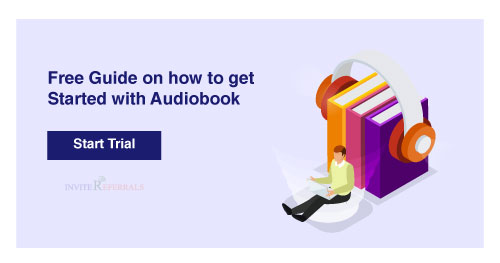Businesses usually waste their resources to find lead quality with different filtering procedures that take a lot of time to deliver results. B2B marketing uses technology to scale and make its lead generation process efficient, but it does not need to streamline these solutions for maximum impact.
Instead, the problem lies with the sales funnels usually filled with poor-quality leads that you have to sort out, hindering efficiency. Therefore, businesses need to focus on their demand generation process first.
In this post, we will learn what demand generation is and the strategies to implement them.
What is Demand Generation?

Demand generation marketing is the process of building awareness and demand for your products or services. It boosts your audience, generates buzz, and pushes traffic to transform interest into action.
Demand generation marketing is about making a predictable pipeline for your sales team:
- It involves the initial campaigns to opt into your mailing list so that your target audience opts.
- It directs your audience to engage with your content, attend your events, and more.
- Demand generation marketing encourages and engages your prospects, keeping your brand top of mind.
Demand generation marketing aims to move buyers through their journey until they become qualified leads. Then, you can convert them into a new customer with the ideal sales pitch.
Best Demand Generation Strategies to Implement
Here are a few strategies you should follow to leverage the full potential of demand generation.
1. Create Educational Content
B2B community audiences always try to upgrade their knowledge either for self-improvement or to advance their professional careers. So if you are an expert, then demonstrate it by sharing educational content as a free download. This will lead to building interest and trust, enticing prospects to buy.
2. Give them Free Trials and Services.

There is no better word than Free that gains attention. We all love free things, so do your customers. People are willing to try anything if it doesn’t cost them a single penny. So you can offer your prospective customers a free service to try or give a free trial for 14 to 30 days. After that, seek their feedback to understand why they did or didn’t become a paying customer.
One report indicates B2B companies that utilize free trials witness an average of 66% in conversions. If you’re anxious that giving away free things is counterproductive, this is refreshing news. Moreover, you can make use of referral programs to disburse the free gifts as rewards.
3. Use Personalized Email Campaigns

Personalization has been proven as one of the best strategies to attract prospects. Therefore, B2B marketers employ it to connect with their target audience. Today, the audience demands relevant content and also marketing messages from brands.
The best way of doing this is to implement personalization through email campaigns. For instance, Nike did a great job; they employed brand email marketing to keep its reputation and build personal connections with interested and engaged customers. For instance, when prospects sign up for their newsletter, they ask for your gender to send relevant content and also showcase and offer promotions for products you like
4. Send Corporate Gifts

Sending gifts to prospects is a great way to generate demand for your product or service. It can potentially cause more than 200% return on investment if done effectively. Moreover, you can send various gifts, including wine, cookies, candle kits, fruit baskets, company swag, and more. Also, sending gifts to prospective customers attracts them to reach out. So make sure you use this demand generation strategy to book calls and meetings.
It also forms a good first impression, which improves the odds of remembering your brand. Next, look for hints on which gifts would appeal to a prospect. Moreover, there are gift-sending platforms available there that you can use to track your corporate gifting campaigns, and it will help you monitor who converts and who doesn’t
5. Create Fun Quizzes
Quizzes are one of the best demand generation strategies. Businesses can use them to attract B2B buyers. For instance, you can create quizzes regarding the latest trends, developments, or more. Implementing quizzes will do two things: First, it will help your audience figure out a problem (or solution) while entertaining them. And it further equips you with insights about your audience. Not only this, it lets you build awareness for your brand.
6. Encourage User-Generated Content
Social media is a great platform for inciting prospects. Encouraging user-generated content will help you strengthen your relations with your audience. For instance, you can ask your supporters to send photos of their office or favorite software tools. Then to gain more engagement, you can give an incentive like a coupon or chance to win a prize. Of course, it is even better to get them to share their experience with your product or service. It will act as social proof for your brand.
7. Create a Scoring Model for Leads
Lead scoring helps you learn about your audience; This point-based system determines how well your demand generation is doing. It shows whether your visitors are converting into leads or not; even it indicates if it’s time to re-evaluate. It will help you determine if you need to target a different channel or implement new tactics. The goal here is to determine why your target audience isn’t converting. You can build a lead scoring board by assigning points to behaviors. For instance, they will get five points for reading a blog post, while downloading a whitepaper will earn 10 points.
8. Host a Webinar

Virtual events are popular nowadays, and the reason behind it is obvious i.e., pandemic. Therefore, Webinars are a fantastic resource B2B brands can utilize for demand generation.
Webinars served well and even more so now that more people work remotely. According to Outgrow, 73% of B2B marketers state webinars are the most useful way to get high-quality leads. And one analysis reveals that 20% to 40% of webinar attendees turn into qualified leads.
9. Engage With Your Audience On LinkedIn
LinkedIn is a great platform for professionals to connect. And over the years, it’s evolved into a community where business people can communicate with one another. So incorporating LinkedIn in your targeting platform list to engage your audience is a great idea.
Data indicates LinkedIn posts get the highest engagement when shared on:
- Wednesdays between 8 a.m. and 10 a.m., and at noon
- Thursdays at 9 a.m. and between 1 p.m. and 2 p.m.
- Fridays at 9 a.m.
Try out different times to notice when your audience engages with your the most.
How to build Demand Generation Campaigns
Here are certain ways that will help you build demand generation campaigns
a) Share a free report.
For introducing your audience to the issue, you first need to showcase concrete and quantitative data to back up your claims. Therefore, sharing free reports or stats about your industry can let your audience understand the problem you’re seeking to bring light to. The report won’t just build visibility for your brand. It will further provide valuable information to your audience that they can utilize to make future buying decisions.
b) Generating a need for your product or service
In most demand generation campaigns, initially, your audience will not be aware of the pain points your product or service will address. Therefore, before generating demand for your product, you have to explain why your customer’s challenges are worth investing money in solving. This could include demonstrating how your product can make an aspect of your prospects’ work or lives more comfortable, more efficient, or more successful at a very high level.
c) Improving brand awareness

Once your audience becomes aware of the existing problems, they ought to trust your brand enough to pick your product or service. Bringing in front of a targeted, informed audience increases the likelihood of someone remembering your product when they decide it’s time to buy.
d) Invest in blogging and guest posts
Producing content that reports and adds value will develop trust and demonstrate you as an authority on the problem you’re seeking to solve. In addition, to boost traffic and engagement on your posts, you can collaborate with other brands in your industry.
Guest posting on industry websites can also increase awareness of a problem you’re attempting to solve and improve your brand’s exposure. Placing yourself as a thought leader within your industry builds opportunities to pitch your idea to more established publications.
e) Develop a strategy for social media
Social media offers a huge opportunity to improve brand awareness among your target audience. Therefore, by implementing a proper social media marketing strategy, you can create trust and improve exposure to your brand as a whole. CreatingFurthermore, building a relationship with your audience on social media will raise brand awareness and generate even more demand for your product or service.
Conclusion
After reading this blog on demand generation and its strategies, you may know how you can create a successful campaign that will help you attract and retain the right customers. Growing your company and yielding consistent, long-term revenue starts with a demand generation strategy that entices the most interested clients in your goods and services.
















